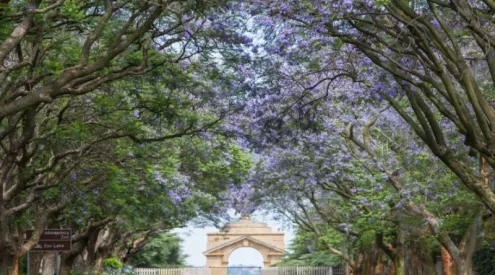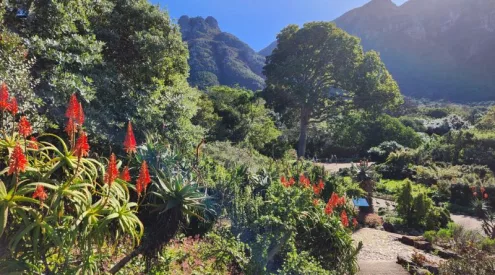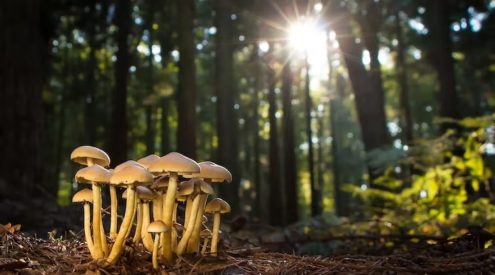The Kruger National Park is famous for the Big 5, the diversity in landscape and for its abundant birdlife, fauna and flora. While you’re in the park, your eyes may be searching for the swish of a tail or the flick an ear in the thicket. On your next visit, however, maybe keep an eye out for these fantastic flowers.
1. Lilac and yellow sickle bush flower (Dichrostachys cinerea)
The sickle bush or Chinese lantern flowers from September to February. The leaflets have an Acacia-like appearance. The fluffy flowers are lilac and yellow and their scent is delightful.
2. The winter impala lily (Adenium multiflorum)
The winter impala lily can be found all over the Kruger and is an iconic feature of some of the park’s rest camps. These beauties mainly flower between May until September.
3. Summer impala lily (Adenium swazicum)
The summer equivalent of the winter impala lily, this drought-resistant dwarf succulent shrub blooms its bright pink flowers from January to April. This plant is listed as critically endangered on the Red List of South African plants.
View this post on Instagram
4. Monkey’s tail or black stick lily (Xerophyta retinervis)
The bobbejan’s stert or black-stick lily is a wispy green leafed plant that flowers in November typically in early summer. The closed flowers resemble a monkey’s tail, hence the name. This sturdy plant can go prolong periods without water, making it a drought-friendly plant. According to krugerpark.co.za, it can also survive in extreme weather conditions like fires and low temperatures.
5. Wild dagga or lion’s ear (Leonotis leonurus)
These colourful flowers are a sunbird’s feast. It is a fast-growing shrub that can stand at 3m tall. According to SANBI, in some parts the flower blooms between November and January and from April to June in others.
6. Leopard orchid (Ansellia africana)
The leopard orchid is the largest of South Africa’s epiphytic (growing above the ground) orchids, according to SANBI. This plant grows in clumps on top of other trees, and bloom in dry winter months. Their yellow and greenish flowers are dotted with brown spots, giving them their name.
View this post on Instagram
Ansellia africana ▪️ #orchids #orquideas #ansellia #anselliaafricana #africanorchidspecies
Image: Instagram



















